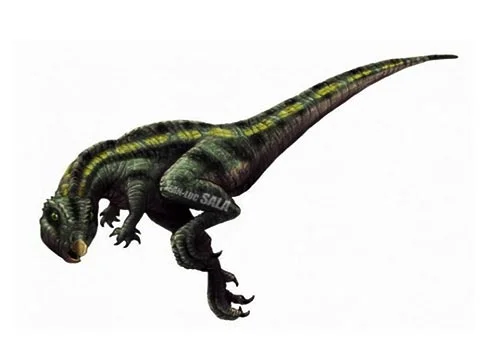Zephyrosaurus (Westward wind lizard)

Zef-e-ir-sore-us
Hans-Dieter Sues - 1980
Herbivore
Estimated 6-8 feet in length
Euornithopod
Z. schaffi (type)
USA, Montana, Carbon County- Cloverly Formation. Possibly elsewhere in the US
Late Cretaceous, 95 million years ago
Zephyrosaurus Facts
Zephyrosaurus was a genus of small ornithopod dinosaur that lived during the Late Cretaceous period, approximately 95 million years ago. Its fossils have been found in the western United States, specifically in Montana, Wyoming, and Utah.
The name “Zephyrosaurus” comes from the Greek word “zephyros,” meaning “west wind,” and “sauros,” meaning “lizard.” This name was chosen because many of the dinosaur’s fossils were found in the western United States, and because it was thought that the animal was adapted to living in a windy environment.
Zephyrosaurus was a relatively small dinosaur, measuring about 6 to 8 feet in length and weighing around 100 to 200 pounds. It had a long, slender tail and long hind legs that were adapted for running. It was a bipedal dinosaur, meaning that it walked on two legs.
One of the most distinctive features of Zephyrosaurus was its skull. It had a long, narrow snout and a row of small teeth that were perfect for eating plants. The shape of its skull suggests that it was a selective feeder, meaning that it preferred certain types of vegetation over others.
Zephyrosaurus was an herbivore, which means that it ate plants. Based on its teeth and jaw structure, scientists believe that it primarily ate low-growing vegetation, such as ferns and other small plants. Its long legs and fast running speed may have allowed it to move quickly between feeding areas, allowing it to find the best plants to eat.
Overall, Zephyrosaurus was a small, fast, and agile dinosaur that was well-adapted to life in the Late Cretaceous period. While it may not have been as famous as some of the larger dinosaurs of the time, it played an important role in the ecosystem of its day. Its fossils continue to provide valuable insights into the evolution and behavior of dinosaurs.



